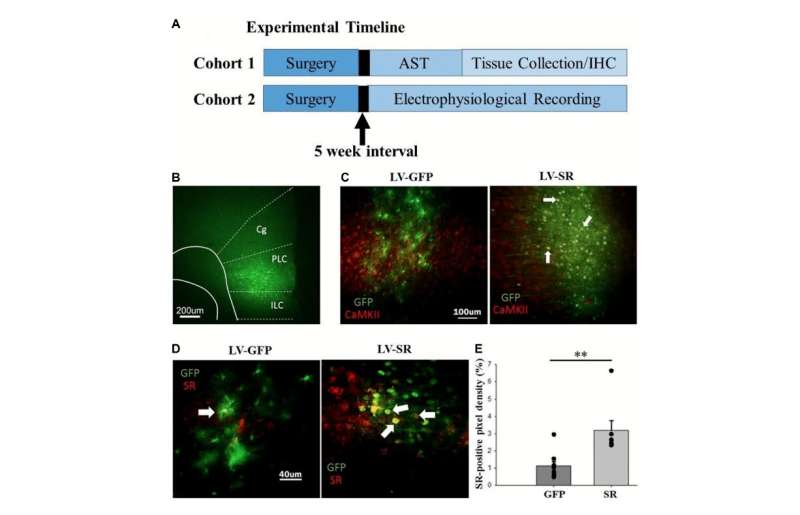This article has been reviewed according to Science X's editorial process and policies. Editors have highlighted the following attributes while ensuring the content's credibility:
fact-checked
proofread
Study: Serine racemase upregulation improves learning and synaptic function

A new research paper was published in Aging, titled "Viral vector-mediated upregulation of serine racemase expression in medial prefrontal cortex improves learning and synaptic function in middle age rats."
An age-associated decrease in N-methyl-D-aspartate receptor (NMDAR)-mediated synaptic function contributes to impaired synaptic plasticity and is associated with cognitive impairments. Levels of serine racemase (SR), an enzyme that synthesizes D-serine, an NMDAR co-agonist, decline with age.
In this new study, researchers Brittney Yegla, Asha Rani and Ashok Kumar from the University of Florida's McKnight Brain Institute predicted that enhancing NMDAR function via increased SR expression in middle age (when subtle declines in cognition emerge) may enhance performance on a prefrontal cortex-mediated task sensitive to aging.
"We hypothesized that augmenting SR expression within mPFC glutamatergic neurons would improve attention and cognitive flexibility in middle-aged rats and facilitate synaptic responses in the mPFC. Thus, for this study, SR expression was upregulated in pyramidal neurons of the mPFC through lenti-viral technology to enhance NMDAR function and evaluate its impact on cognitive flexibility and NMDAR-mediated synaptic transmission in middle-age rats," say the authors.
Middle-aged (~12 mo) male Fischer-344 rats were injected bilaterally in the medial prefrontal cortex (mPFC) with viral vector (LV), SR (LV-SR) or control (LV-GFP). Rats were trained on the operant attentional set-shift task (AST) to examine cognitive flexibility and attentional function. LV-SR rats exhibited a faster rate of learning compared to controls during visual discrimination of the AST.
Extradimensional set shifting and reversal were not impacted. Immunohistochemical analyses demonstrated that LV-SR significantly increased SR expression in the mPFC. Electrophysiological characterization of synaptic transmission in the mPFC slices obtained from LV-GFP and LV-SR animals indicated a significant increase in isolated NMDAR-mediated synaptic responses in LV-SR slices.
Thus, results of the current study demonstrated that prefrontal SR upregulation in middle age rats can improve learning of task contingencies for visual discrimination and increase glutamatergic synaptic transmission, including NMDAR activity.
The researchers conclude, "The results from this study support the beneficial effects of the D-serine pathway involvement in NMDAR-mediated transmission and cognitive function, expanding the literature to emphasize its role in not only the hippocampus but also the PFC. Thus, targeting this pathway could pose a potential route in reversing age-related cognitive decline and should be considered for future research."
More information: Brittney Yegla et al, Viral vector-mediated upregulation of serine racemase expression in medial prefrontal cortex improves learning and synaptic function in middle age rats, Aging (2023). DOI: 10.18632/aging.204652




















